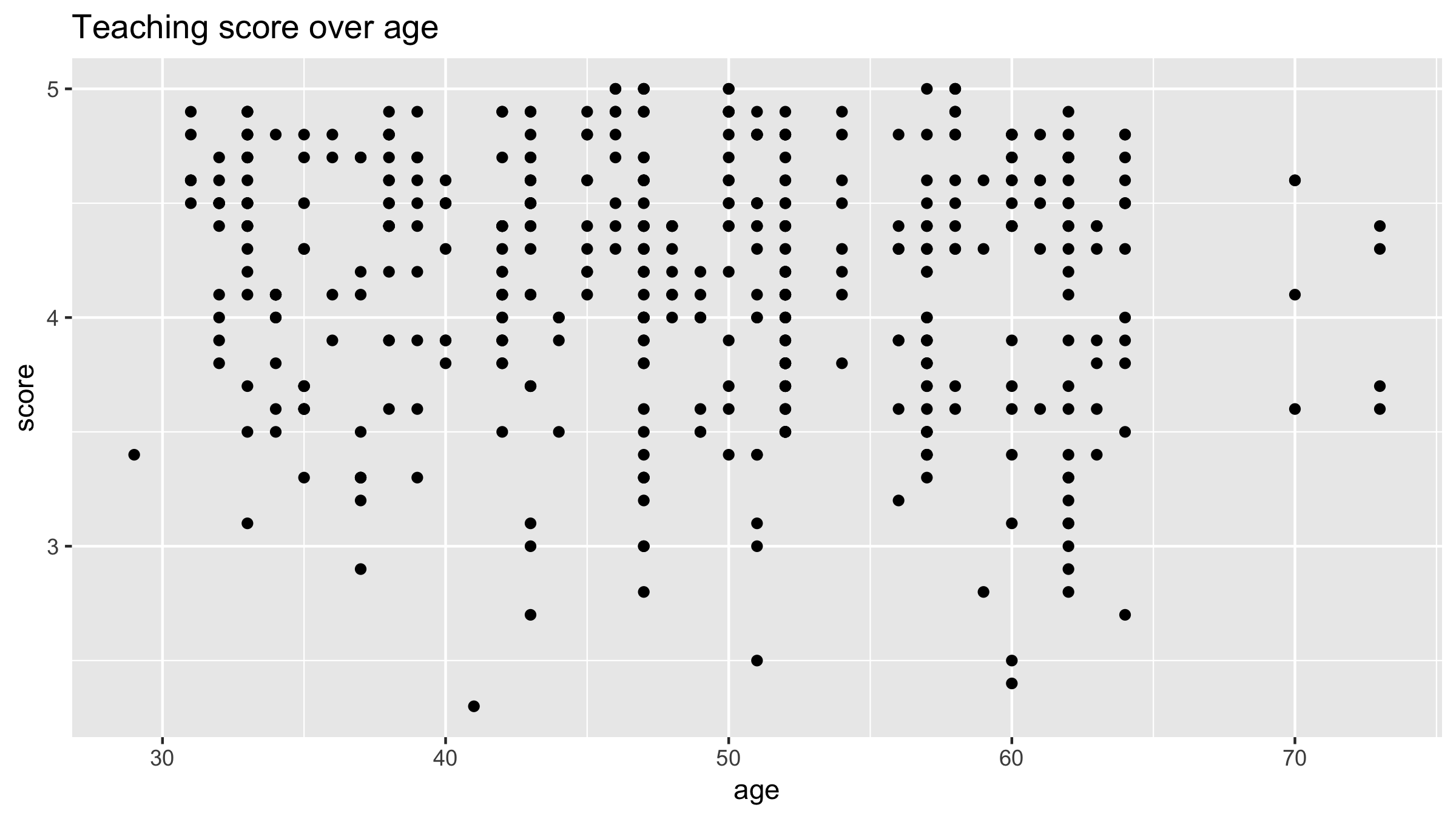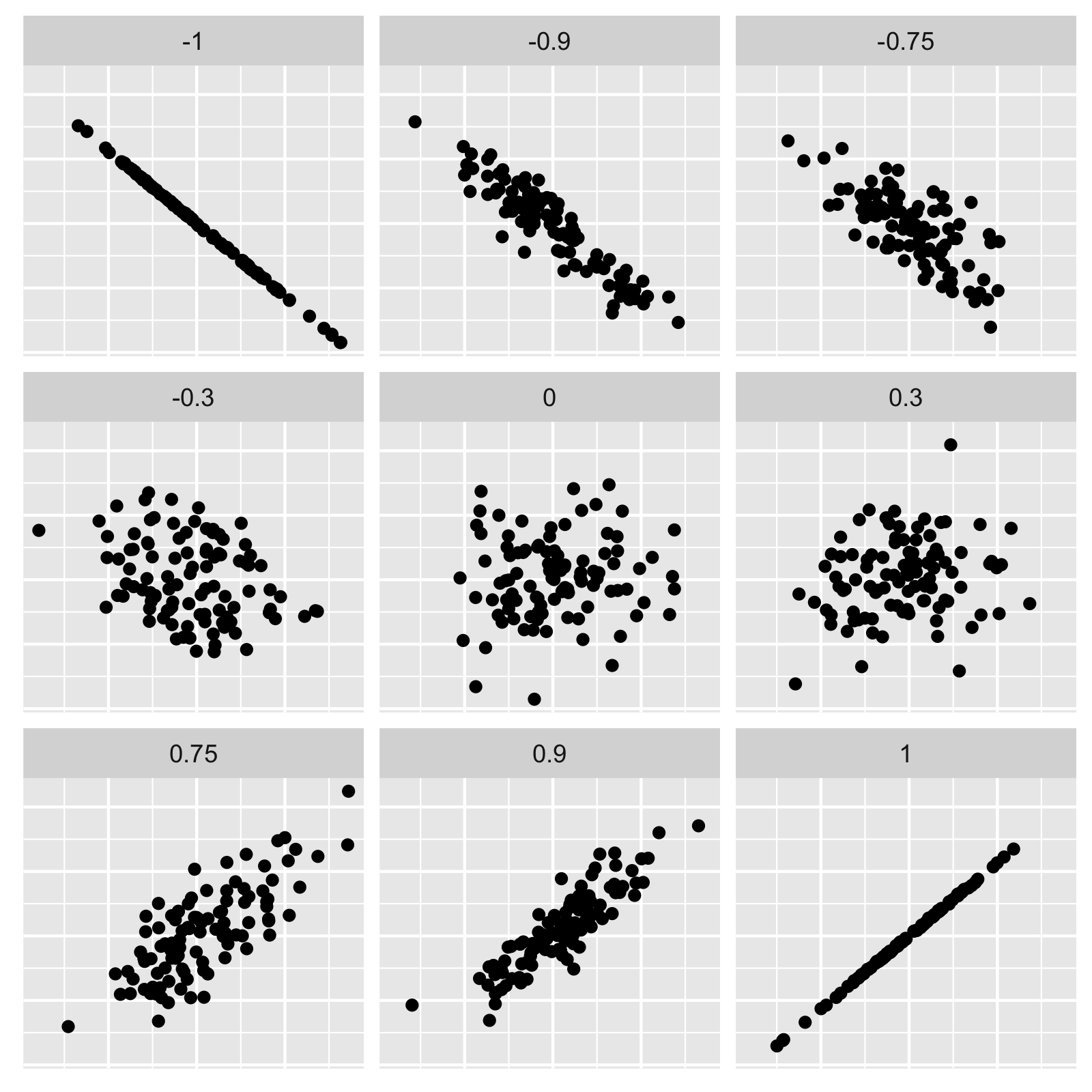The modeling problem for explanation
Modeling with Data in the Tidyverse

Albert Y. Kim
Assistant Professor of Statistical and Data Sciences
Recall: General modeling framework formula
$$ y = f(\vec{x}) + \epsilon $$
Where:
- $y$: outcome variable of interest
- $\vec{x}$: explanatory/predictor variables
- $f()$: function of the relationship between $y$ and $\vec{x}$ AKA the signal
- $\epsilon$: unsystematic error component AKA the noise
The modeling problem
Consider $y = f(\vec{x}) + \epsilon$.
- $f()$ and $\epsilon$ are unknown
- $n$ observations of $y$ and $\vec{x}$ are known/given in the data
- Goal: Fit a model $\hat{f}()$ that approximates $f()$ while ignoring $\epsilon$
- Goal restated: Separate the signal from the noise
- Can then generate fitted/predicted values $\hat{y} = \hat{f}(\vec{x})$
Modeling for explanation example

EDA of relationship
library(ggplot2)
library(dplyr)
library(moderndive)
ggplot(evals, aes(x = age, y = score)) +
geom_point() +
labs(x = "age", y = "score",
title = "Teaching score over age")
EDA of relationship

Jittered scatterplot
library(ggplot2)
library(dplyr)
library(moderndive)
# Use geom_jitter() instead of geom_point()
ggplot(evals, aes(x = age, y = score)) +
geom_jitter() +
labs(x = "age", y = "score",
title = "Teaching score over age (jittered)")
Jittered scatterplot

Correlation coefficient

Computing the correlation coefficient
evals %>%
summarize(correlation = cor(score, age))
# A tibble: 1 x 1
correlation
<dbl>
1 -0.107
Let's practice!
Modeling with Data in the Tidyverse

